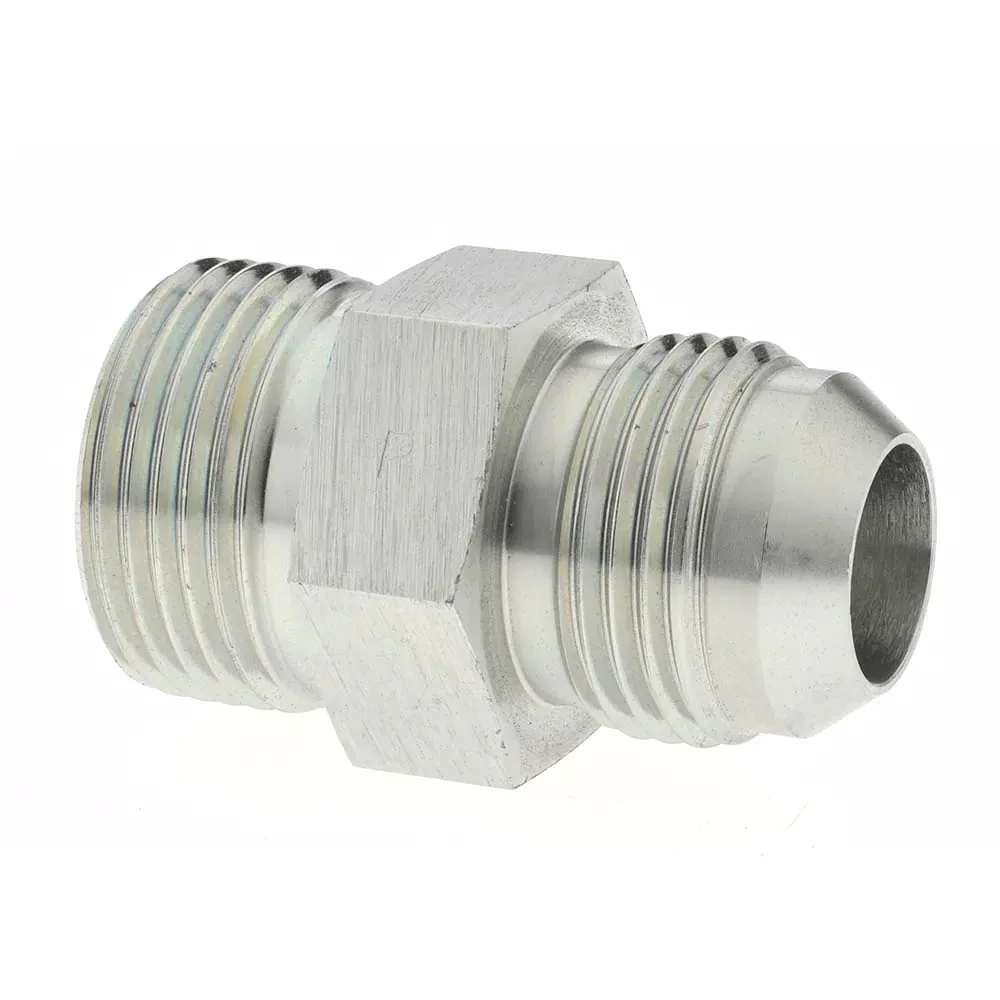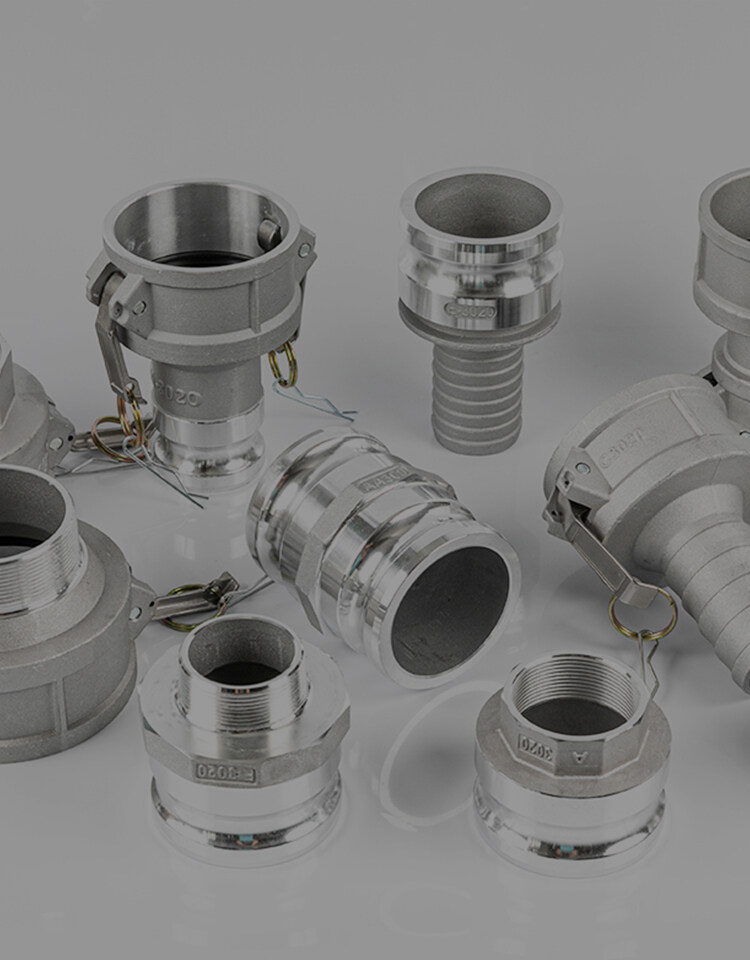Erreur de format d'e-mail
emailCannotEmpty
emailDoesExist
pwdLetterLimtTip
inconsistentPwd
pwdLetterLimtTip
inconsistentPwd

Nouvelles
Ici, vous pouvez décrire un morceau de texte que vous souhaitez exprimer

Mastering the Integration of Air Quick Coupler Bulkhead Fitting in Pneumatic Systems
In the intricate dance of pneumatic systems, where air is the lifeblood that powers machinery and tools, the air quick coupler bulkhead fitting plays a pivotal role. This seemingly modest component is the linchpin in ensuring airtight connections through barriers, allowing for a streamlined and efficient workflow. In this detailed exploration, we will delve into the world of air quick coupler bulkhead fittings, examining their significance, variety, and the nuances of selecting and installing them to enhance your system’s performance.
The Essence of Air Quick Coupler Bulkhead Fittings:
The fittings are specialized devices designed to provide a stable and secure pass-through for air hoses in a pneumatic system. They are typically mounted on a wall, tank, or panel, allowing for a direct connection while maintaining the integrity of the barrier they penetrate. The quick coupling mechanism enables fast and effortless hose attachment and detachment, which is essential for maintaining productivity in fast-paced industrial environments.
The Critical Role of Air Quick Coupler Bulkhead Fittings:
The functionality extends beyond mere convenience. They are critical in preventing air leakage, which can lead to pressure drops, compromised tool performance, and increased energy consumption. In industries where precision and reliability are non-negotiable, such as automotive assembly, aerospace manufacturing, and automation, these fittings are indispensable.
Diversity of Air Quick Coupler Bulkhead Fittings:
They are not a one-size-fits-all solution. They come in an array of designs to meet the specific demands of various applications. Some of the most common variations include:
Push-to-Connect Fittings:
These user-friendly fittings allow operators to connect hoses quickly by simply pushing them into the fitting until they lock into place. They are ideal for applications where time is of the essence and frequent hose changes are necessary.
Threaded Fittings:
For a more permanent and secure connection, threaded fittings are the go-to choice. They require the hose to be screwed into the fitting, creating a tight seal that is less prone to accidental disconnection.
Elbow and Straight Fittings:
The direction of the hose connection is a critical consideration in system design. Elbow fittings provide a 90-degree turn, facilitating horizontal or vertical hose routing, while straight fittings offer a direct pass-through.
Material Variations:
Air quick coupler bulkhead fittings are available in materials such as brass, stainless steel, and plastic. Each material offers different benefits, such as corrosion resistance, durability, and suitability for specific environments or media.
Selecting the Perfect Air Quick Coupler Bulkhead Fitting:
The selection process for the ideal air quick coupler bulkhead fitting involves several critical considerations:
Material Compatibility:
Choose a fitting material that can withstand the environmental conditions it will face, whether it’s exposure to harsh chemicals, extreme temperatures, or moisture.
Pressure Ratings:
The fitting must be capable of handling the maximum operating pressure of your pneumatic system without risk of failure.
Hose Compatibility:
Ensure that the fitting is suitable for the type and size of hose you intend to use, as an improper fit can lead to leaks and system inefficiency.
Connection Type:
Consider the specific needs of your application when deciding between a push-to-connect or threaded fitting. The former offers speed and convenience, while the latter provides a more secure connection.
Seal Quality:
A high-quality seal is essential for preventing air leaks. Look for fittings with robust sealing mechanisms, such as O-rings or gaskets, made from materials compatible with your system’s operating conditions.
Installation Mastery for Air Quick Coupler Bulkhead Fittings:
Correct installation is crucial for the performance and longevity. Here are detailed steps and tips to ensure a successful installation:
Preparing the Installation Site:
Before installing the fitting, make sure the bulkhead or panel is clean, smooth, and free from any burrs or sharp edges that could damage the fitting or hoses.
Drilling and Tapping:
If the bulkhead does not have pre-drilled holes, carefully drill a hole to match the size of the fitting’s thread. Use a tap to create threads that correspond to the fitting’s specifications.
Applying Sealant:
For threaded fittings, apply a thread sealant or Teflon tape to the fitting’s threads to ensure an airtight seal. Be careful not to over-apply, as excess sealant can enter the air system and cause blockages.
Tightening the Fitting:
Insert the fitting into the bulkhead and tighten it using the appropriate tools. Avoid over-tightening, which can strip the threads or crack the fitting, especially if it’s made of plastic.
Testing for Leaks:
After installation, pressurize the system and use a soap solution or leak detector to check for air leaks around the fitting. Address any leaks immediately to ensure system integrity.
Maintenance and Troubleshooting:
To keep your air quick coupler bulkhead fittings in prime condition, regular maintenance is key. Here’s how to maintain and troubleshoot these fittings:
Routine Checks:
Regularly inspect the fittings for signs of wear or damage. Look for cracks, corrosion, or any other indications that the fitting may need to be replaced.
Cleaning Procedures:
Keep the fittings clean by wiping them down with a suitable cleaner. Avoid using harsh chemicals that could degrade the fitting materials.
O-Ring and Seal Replacement:
Over time, O-rings and seals may wear out and lose their ability to maintain an airtight seal. Replace these components as needed to prevent leaks.
Lubrication:
Some fittings may require occasional lubrication to ensure smooth operation. Use a lubricant that is compatible with the fitting material and the air system’s media.
Troubleshooting Tips:
If you encounter issues with your fittings, such as difficulty connecting or disconnecting hoses, check for debris or damage to the fitting’s mechanism. In cases where hoses are hard to remove, ensure that the system is depressurized before attempting to disconnect them.
Conclusion: The air quick coupler bulkhead fitting is a small but mighty warrior in the arsenal of pneumatic system components. Its ability to provide a secure, leak-proof connection through barriers is invaluable in maintaining the efficiency and reliability of air-powered operations. By carefully selecting the right type of fitting, adhering to proper installation practices, and conducting regular maintenance, you can ensure that your pneumatic system operates at peak performance. Whether you’re working with a female air hose coupler or a male air hose fitting, the principles of proper fitting selection and care remain the same. Trust in the quality of an air hose fittings factory to provide you with the best components for your needs, and enjoy the benefits of a well-maintained pneumatic system for years to come.

